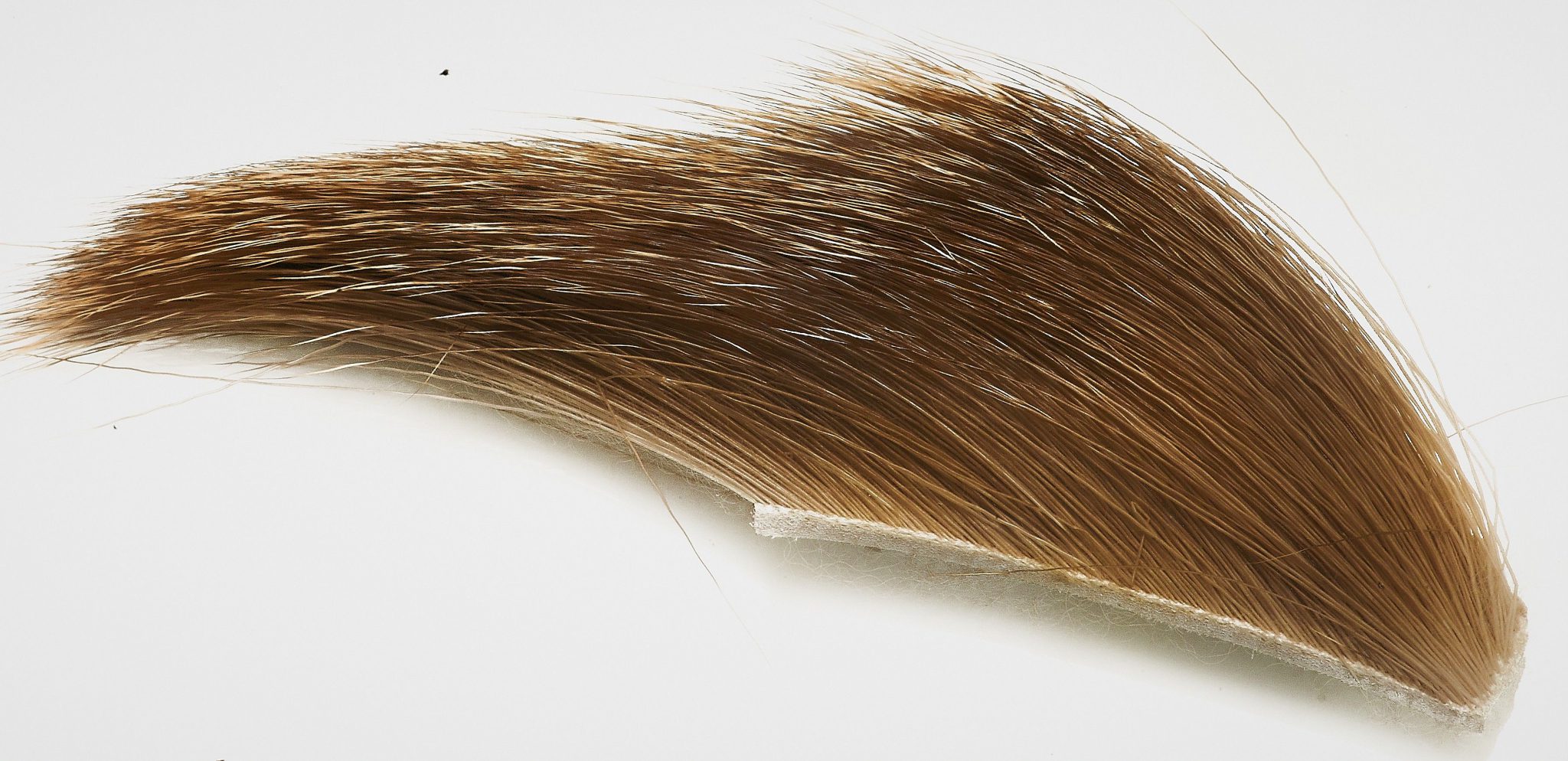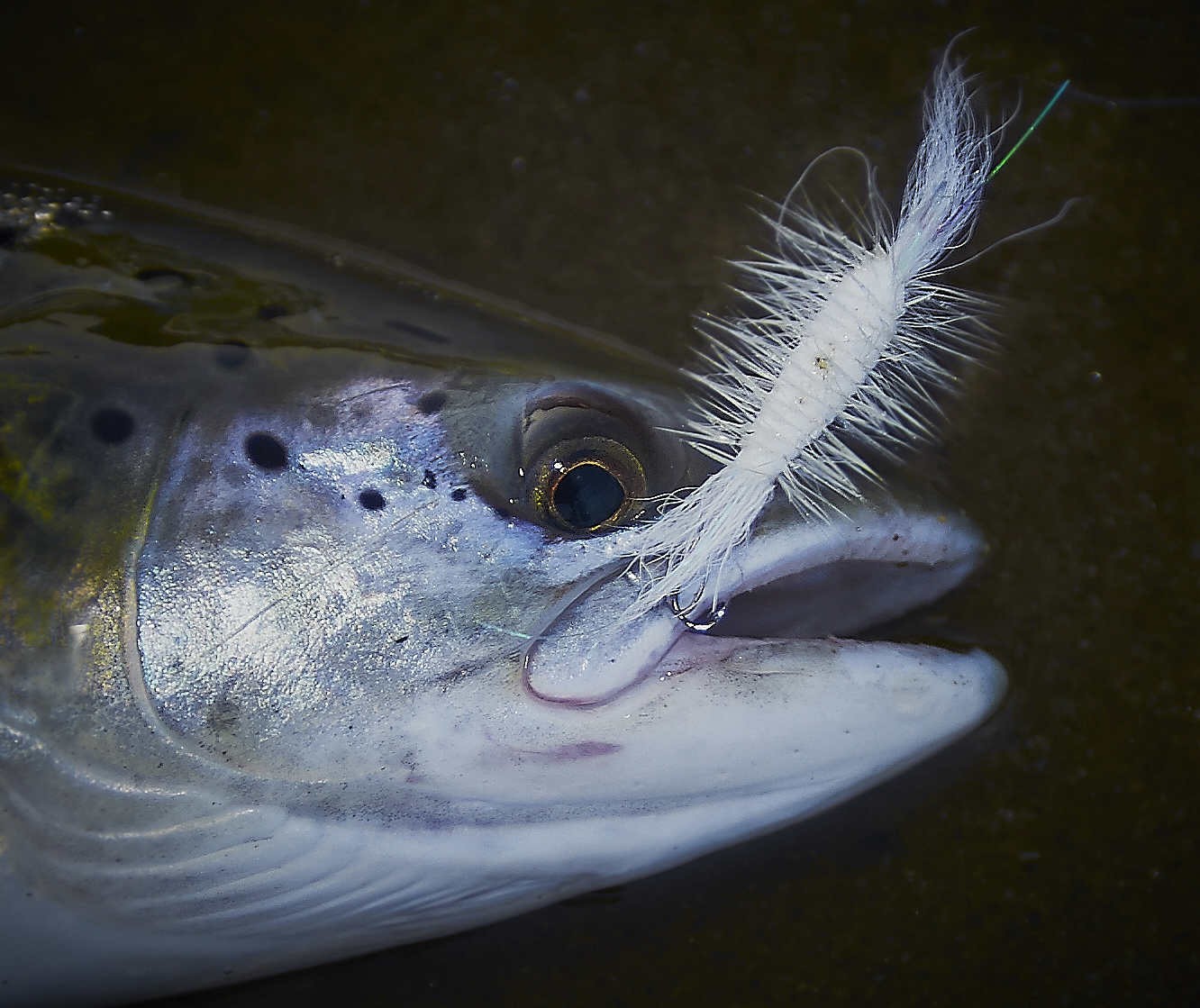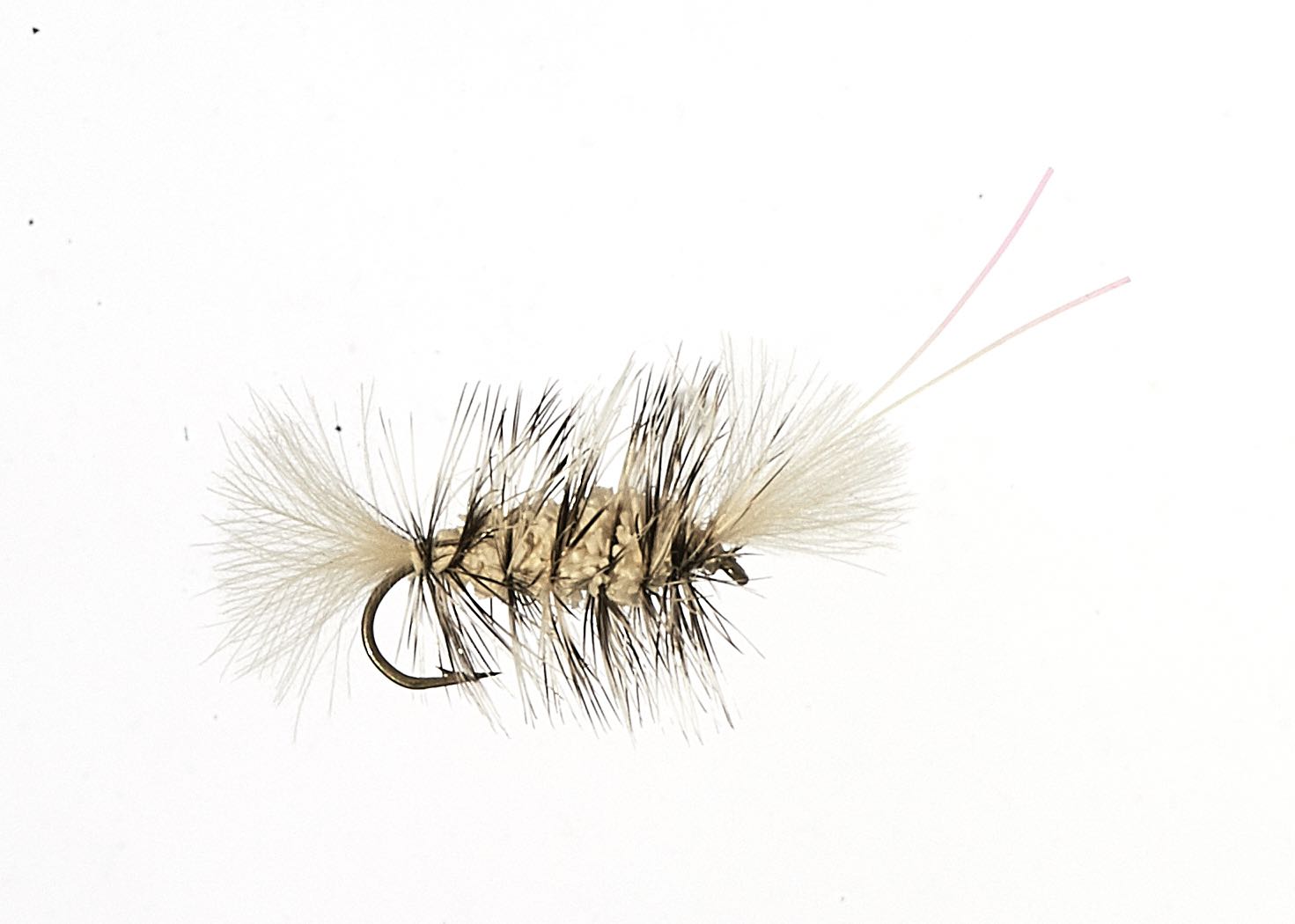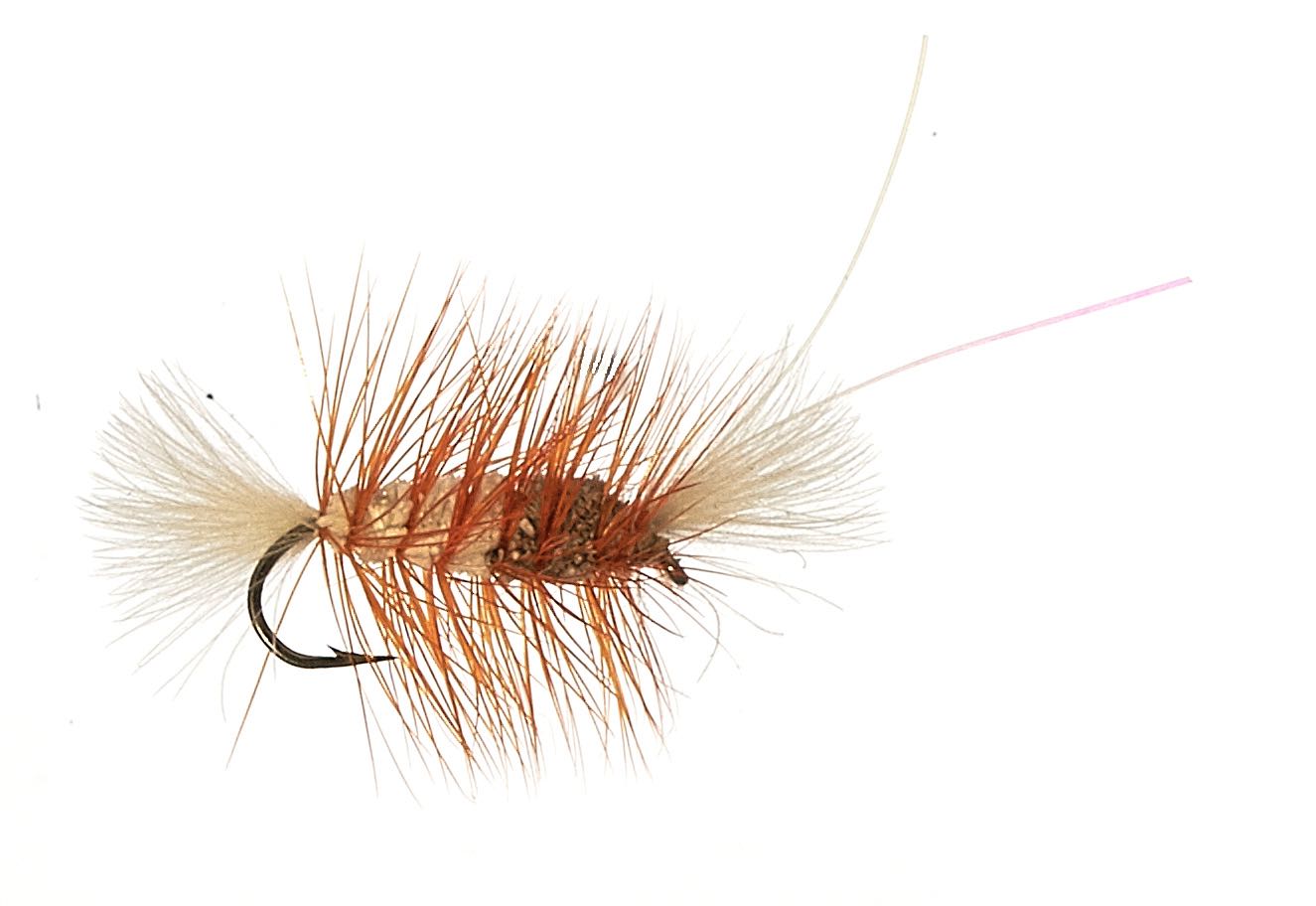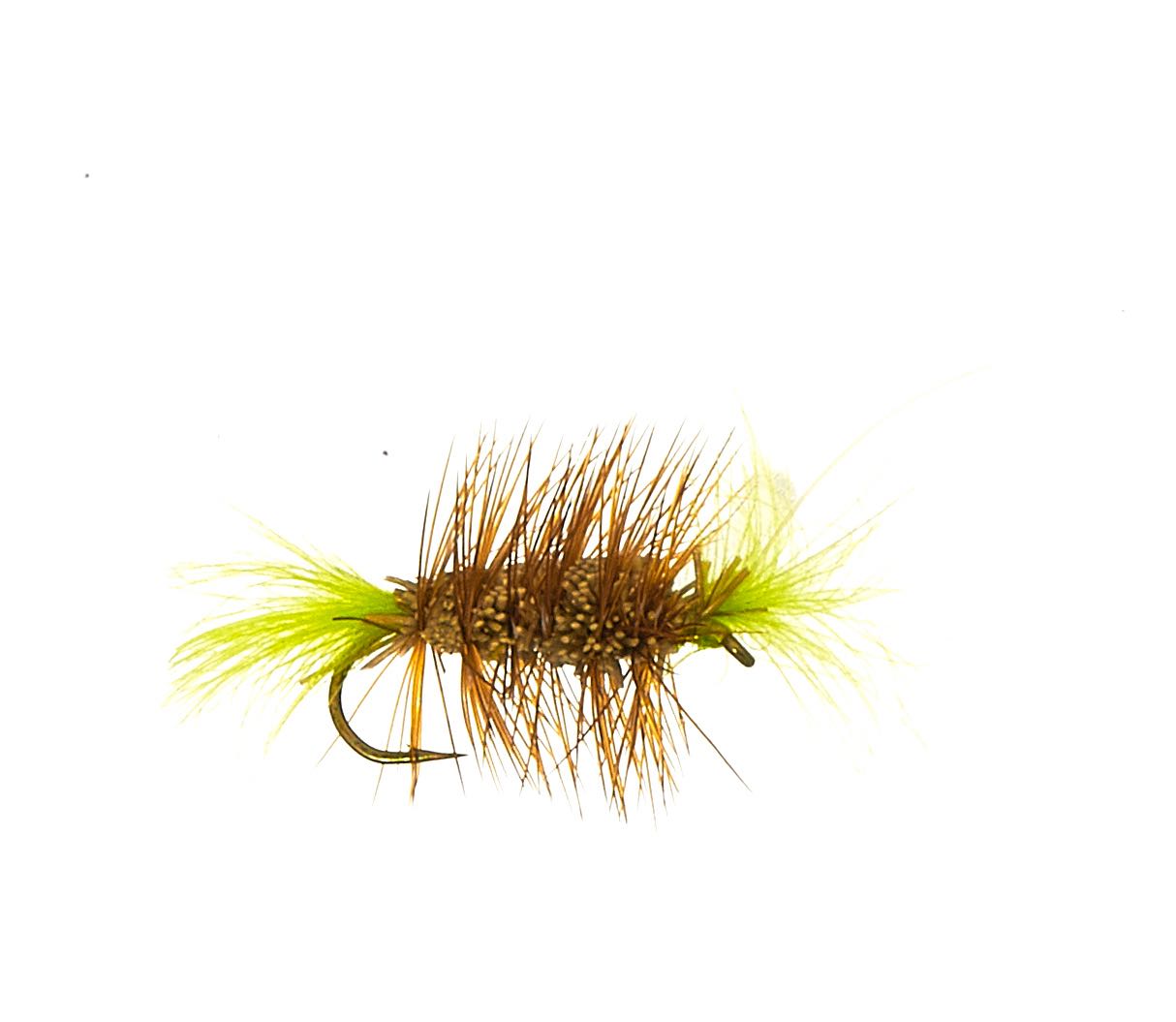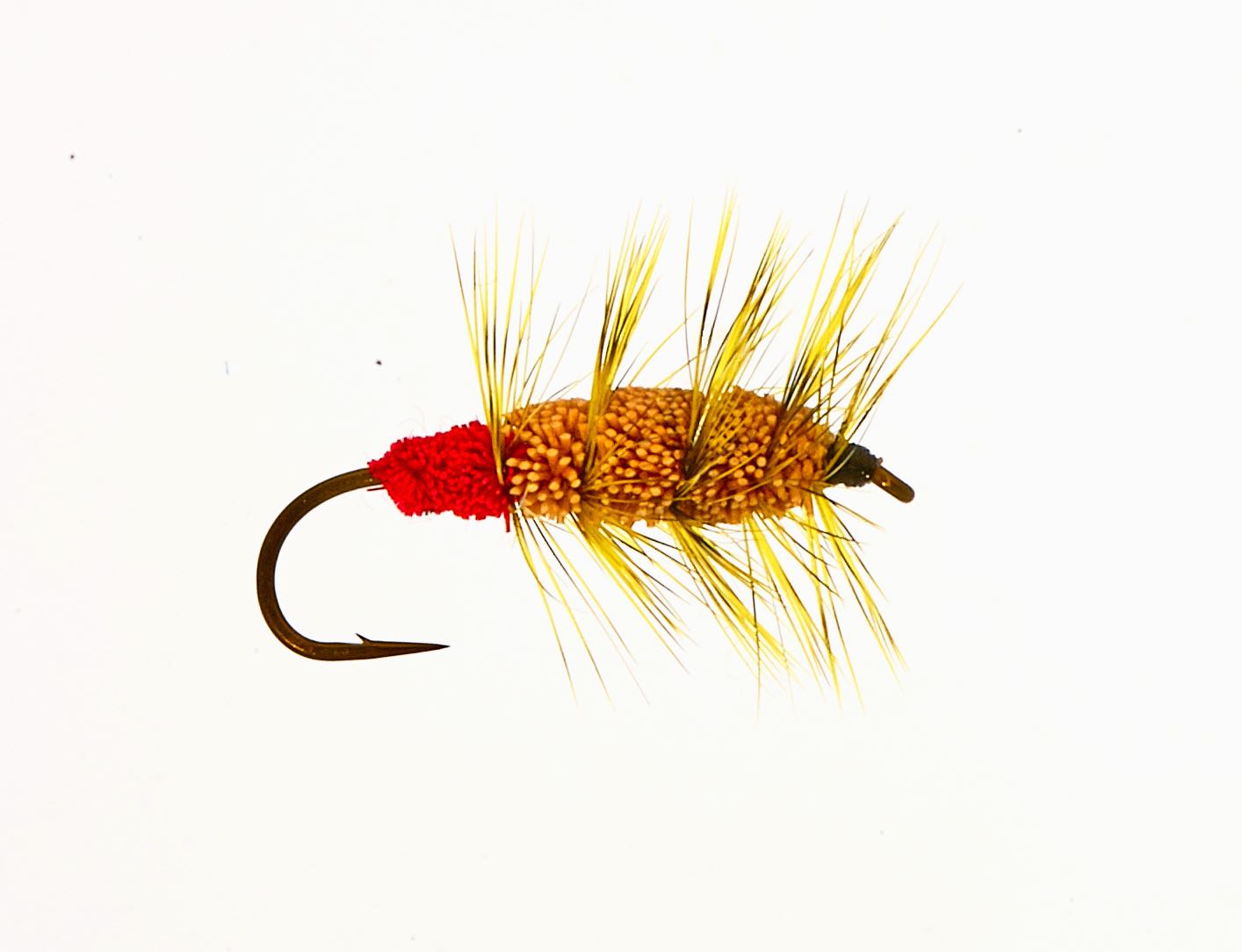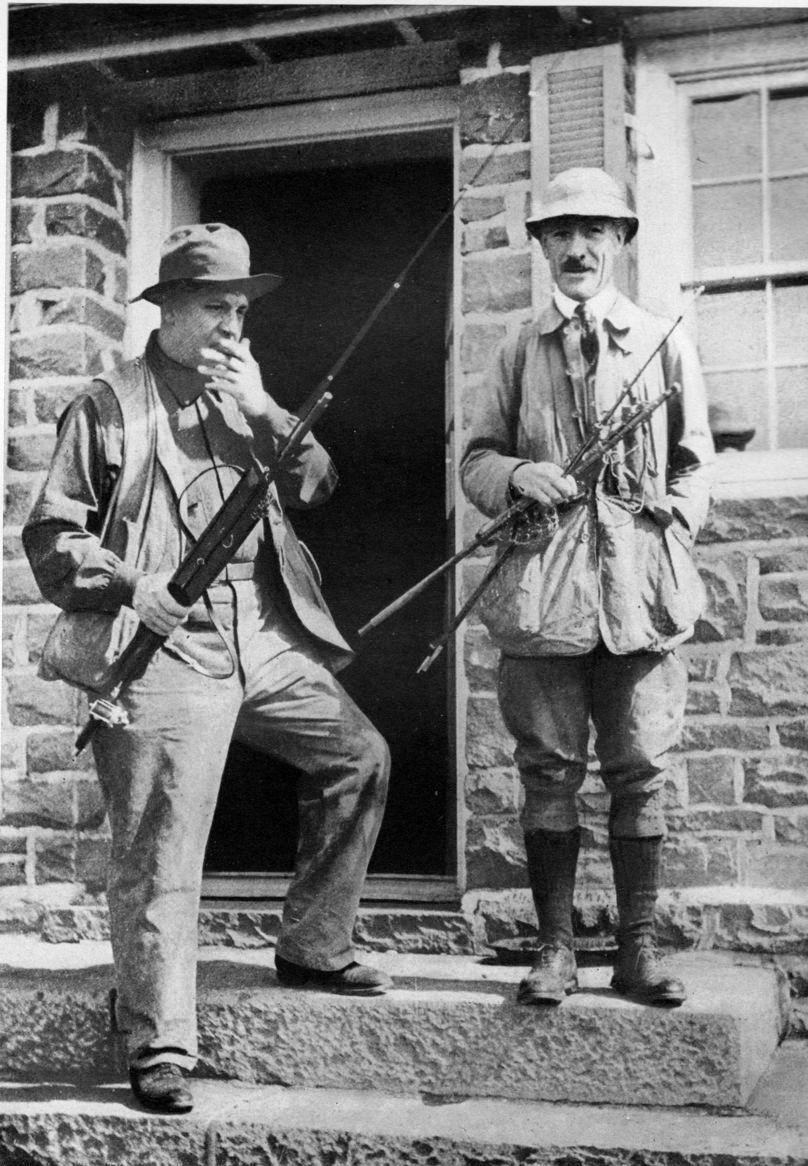Before You Start Tying Riffling Hitch Tube Flies: A Handy Tool for the Job Before…
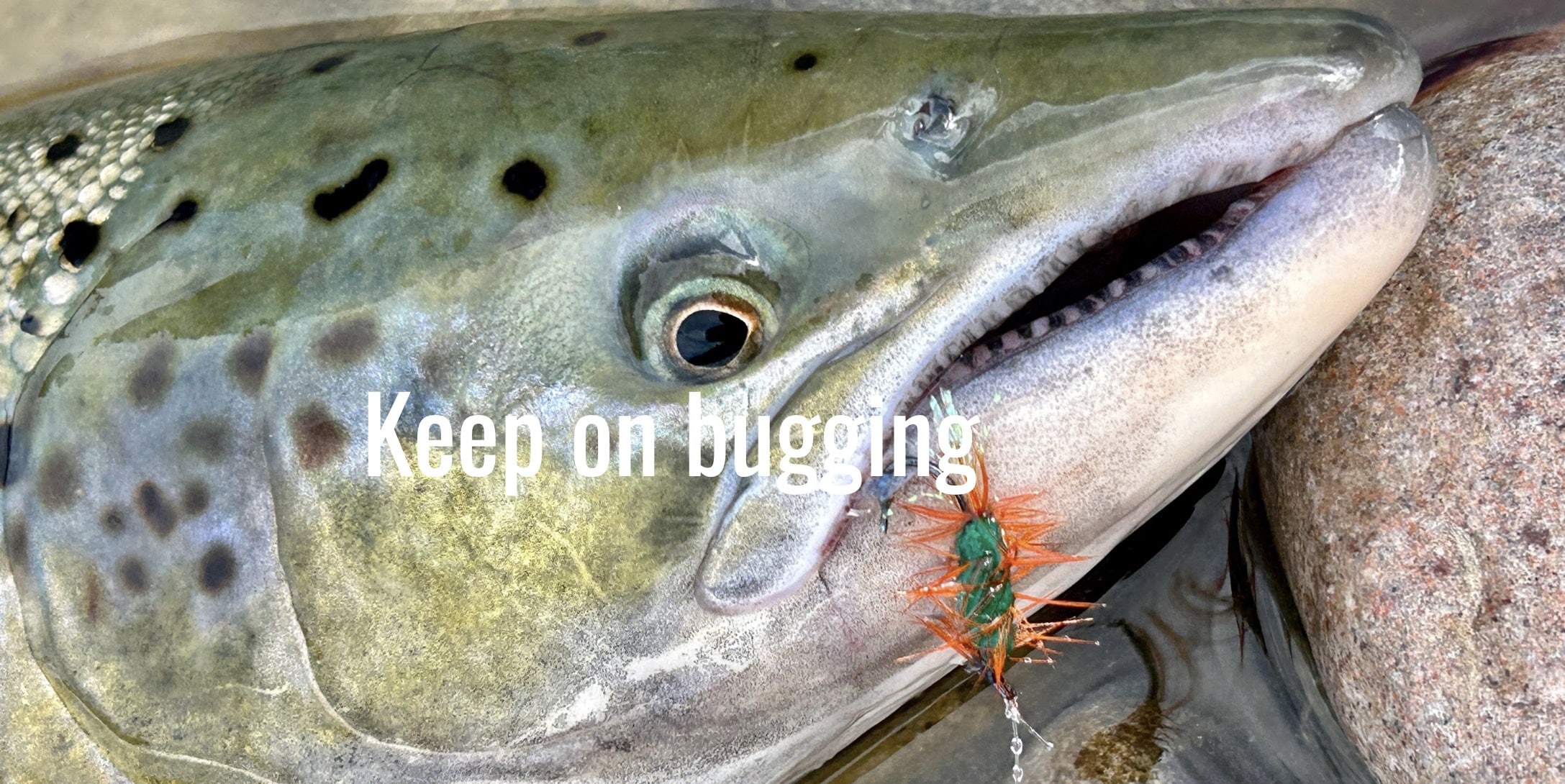
Bugs for Atlantic Salmon
We wish to further the details on salmon bugs and give you some first-hand usage tips based on my experiences with them.
What are Salmon bugs?
Bugs are small miniature salmon flies, mostly made with a deer hair body, tied on # 8 – 12 single hooks. Either low-water salmon hooks with an up-eye or stronger down-eye trout fly hooks. It is a fly designed to be fished as a so-called dead-drifting fly on the surface. Just below the surface or across the river as a form of hitch/commotion fly, bugs may be fished below the surface as a traditional wet fly.
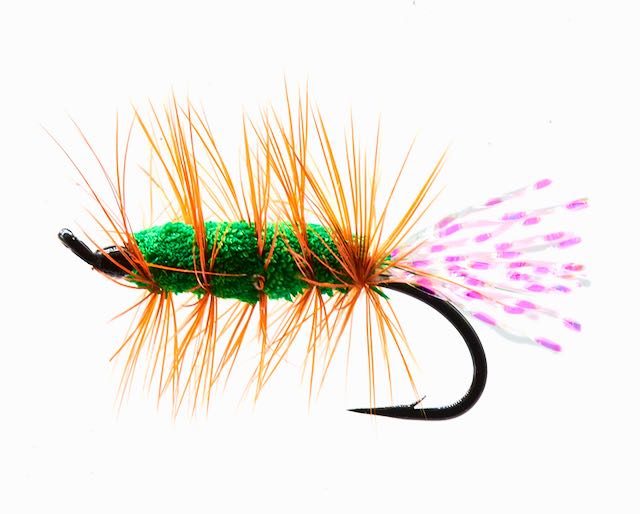
The Glitter Bug with a brown-orange hackle is the author’s favourite for green-tinted forest rivers.
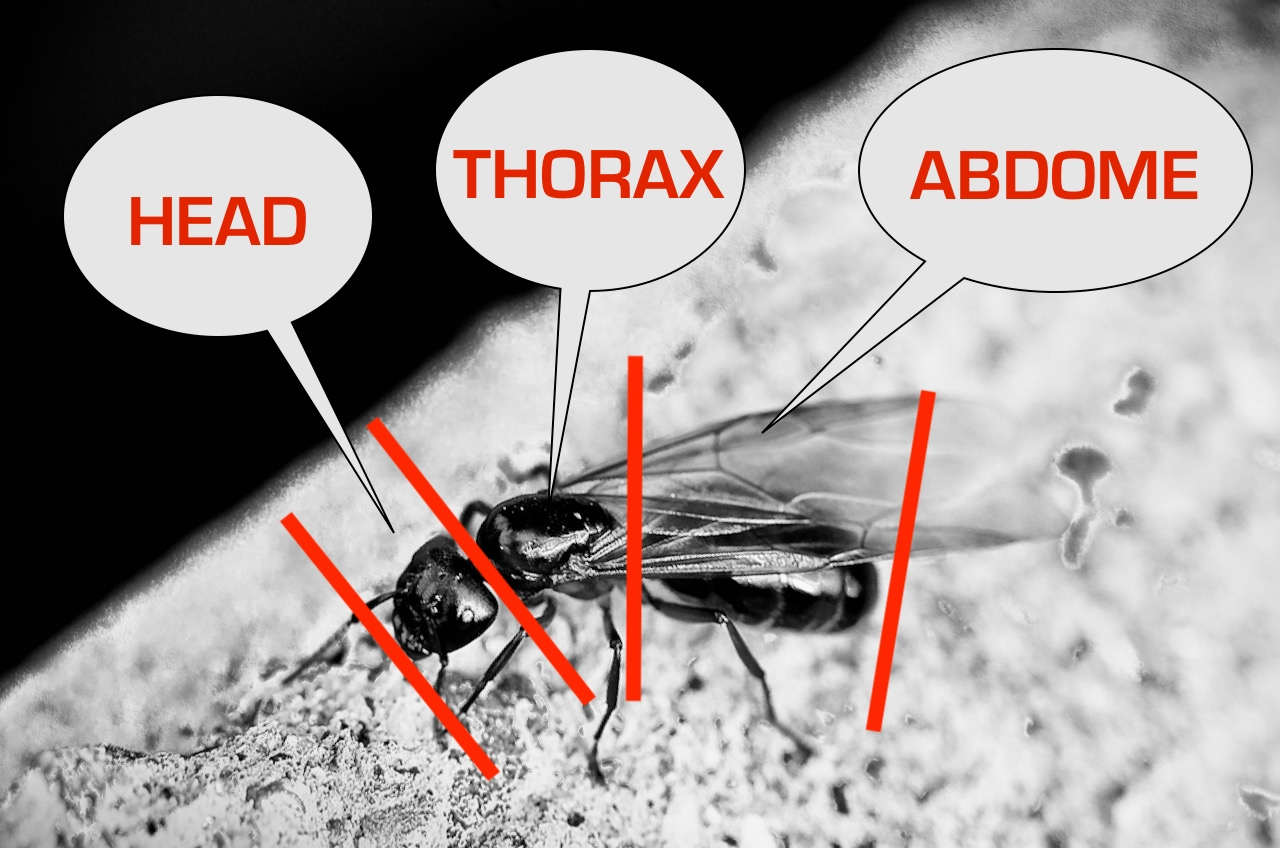
Body like a segment of an insectThe deer-hair body on bug flies is often shaped like an insect thorax. (in entomology, the thorax is the middle section of an insect’s body, between the head and the abdomen, bearing the legs and wings.)
Deer hair and its enticing effect on salmon
It is the deer hair material in itself that makes flies like the Bomber and the Salmon Bugs so efficient. The buoyant deer hair gives the fly a particular posture or pose in the water, making the fly float or become more or less suspended when pulled under. The deer hair also has a general alluring effect on many fish.
What is within the deer hair that attracts fish has not yet been determined, but many fish species, among others, trout, do eat animals with fur. Read more about deer hair and its enticing effect on Atlantic salmon. Go to page
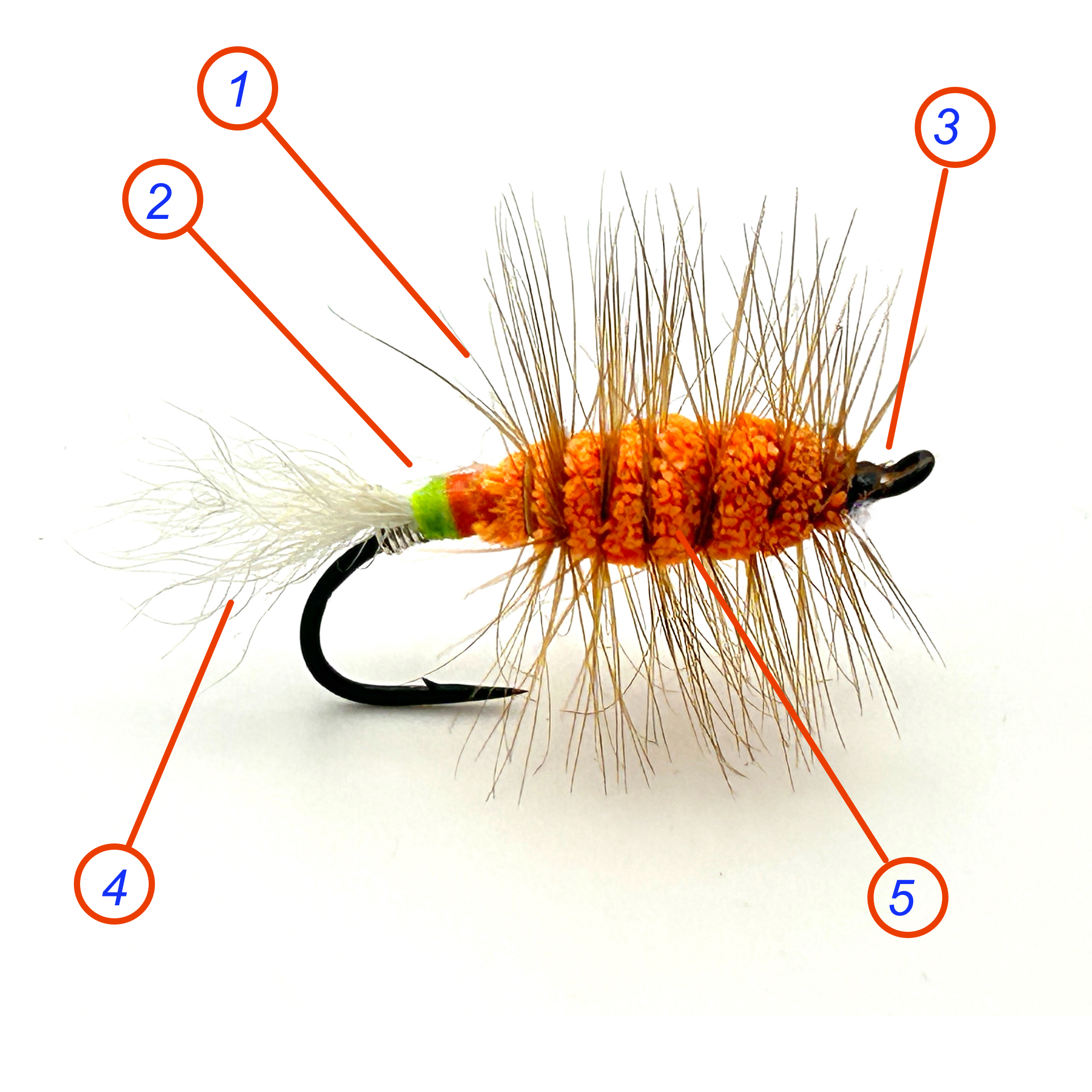
Less is more
A light body hackle could aid the fly in staying afloat or add to its overall pulsating and delicate looks when fished below or on the surface.
Many Bug patterns have distinct fluorescent tags, diminutive tails, and dito hackles related to other famous low-water wet flies like The Undertakers and the Black Bear flies.
On a broad scale, less fluorescent material used in fluorescent tags in green, yellow, or red is the way forward when tying flies for Atlantic salmon in low and clear water – and quite the opposite when building flies for high and dirty water.

Mr Elmer Smith made the first bug salmon fly.
Using deer hair as body material in salmon and trout flies is a North American tradition deriving back to famed patterns like The Muddler Minnow and the Bombe series of flies. It is the venerable Reverent Elmer James Smith from New Brunswick in Canada, who, in the 1960s and 70s, initially tied the flies that we have come to know as salmon bugs. With the success of his famous salmon dry fly, the Bomber, the reverent designed a much smaller and sparsely dressed derivative of the Bomber pattern that came to be known as the Bucks Bug
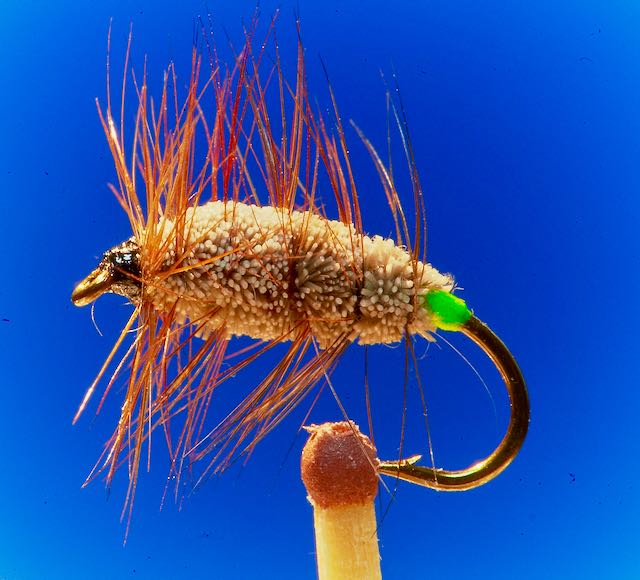
Photo of the late Father Elmer James Smith, the exceptional salmon dry fly pattern designer. Image from Miramichi Salmon Museum – Doaktown, New Brunswick, Canada

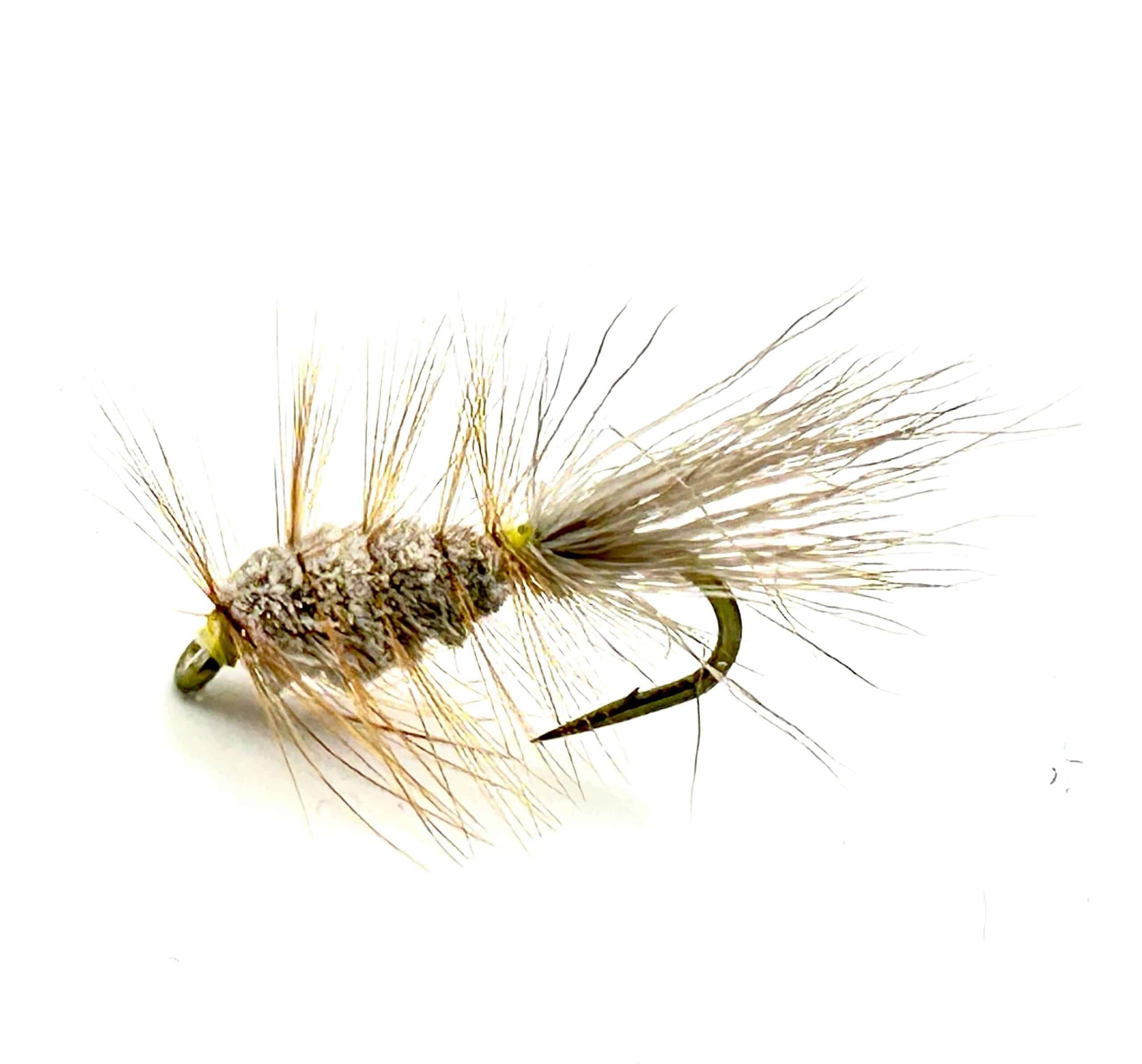
The Carter Bug is another famous bug pattern from Canada designed autonomously by Mr Bill Carter from New Brunswick, Canada. The Carter Bug is typically tied with a brown hackle, but I have also had success with this fly tied with an orange hackle.
Was the Bucks Bug the first purposely tied salmon bug, or was it the Carter Bug?
The Carter Bug was designed at the same time as the Bucks Bug
In regards to the timeline of the design of the Bomber and the equally famous Bucks Bug, also attributed to Elmer Smith by, among others, Joseph Bates, it is known that other well-described and much earlier patterns like Rat Faced MacDougall and the great pattern the Irresistible (from the 50s) are deer hair body trout flies that most likely where used by anglers on both the East as the West coast of Canada to catch Atlantic salmon and steelhead on the surface long before intentionally made patterns like the Bucks Bug.
Likely, the Rev. Elmer Smith and Bill Carter (the designer of the Carter Bug) could have used such Irresistible or Rat-Faced MacDougall flies or, probably, a Muddler in their pursuit of salmon or trout, herby getting their inspiration to design their own deer-hair floating salmon flies.
If the Carter Bug or the Bucks Bug is the first salmon bug, it is still out for verdict. Based on what we know, both the Carter Bug and the Bucks Bug are of the very same period, so as we usually would write here on Fishmadman, we still try to get all the details of surface fly history in the correct chronological order. So, Fishmadman.com could also be described as an online fishing book with a historical chapter on flies that may change over time. Any knowledge that may help us on this task is, as always, welcome.
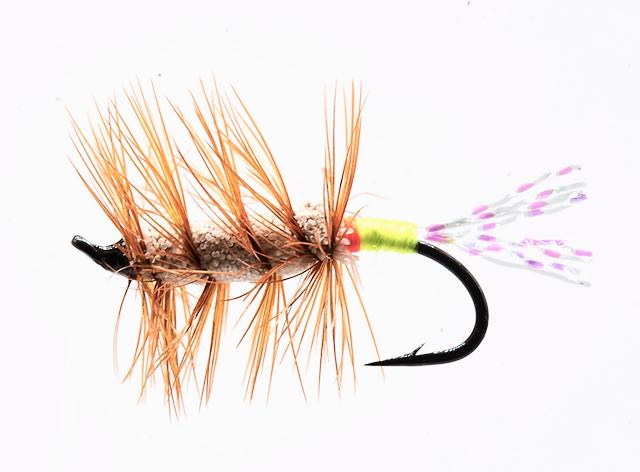
Here, the famed Glitter Bug originated by Canadian fly tier Danny Bird. The Glitter bug is a fine example of a fly formulated on another pattern. It is incorporated into a specific fishing purpose or river system.
It’s a genuinely excellent salmon bug for peaty water.
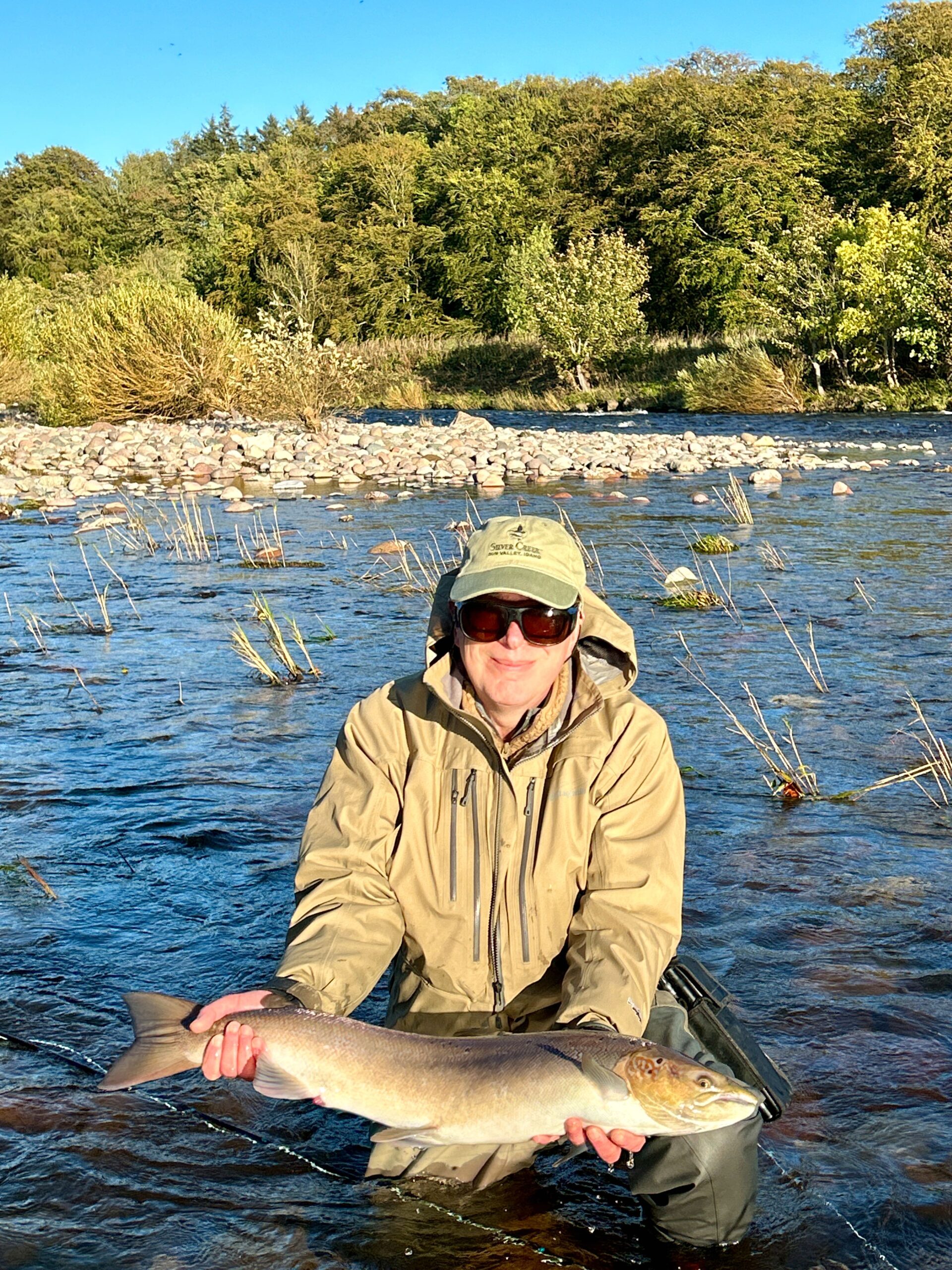
Glitter Bug in Scotland
A peat-colored Scottish river in October. Fish have seen 100s patterns over summer; in such conditions, a small natural brown Glitter Bug could work great when fished deep as a regular wet fly.
A bug for every river
Famous patterns for Atlantic Salmon are quite often found in many versions, and for a good reason: one fly may work great in one body of water, but another similar version may work better in the neighbouring river, something quite notable when you look at the good amount of bug variations found in fly boxes around the Northern Hemisphere.
The famous 1970s fly, the Green Machine, started as an offspring of the equally renowned Bucks Bug. They are tied with a body of bright green deer hair and a small green fluorescent tag. Some anglers may prefer a dark green body on their Green Machine, while others choose a pale olive body.
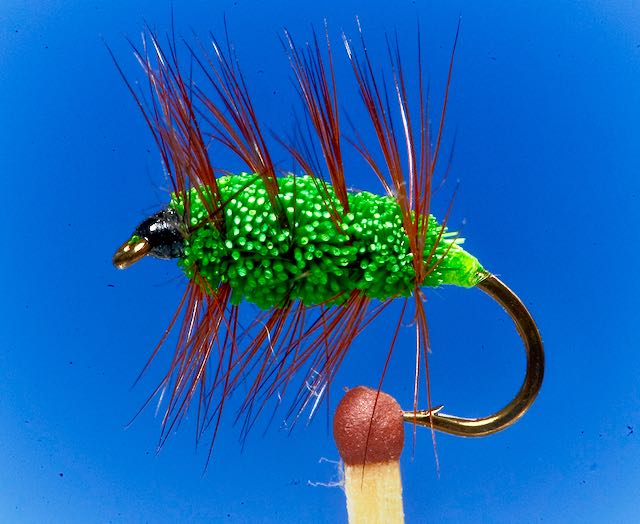
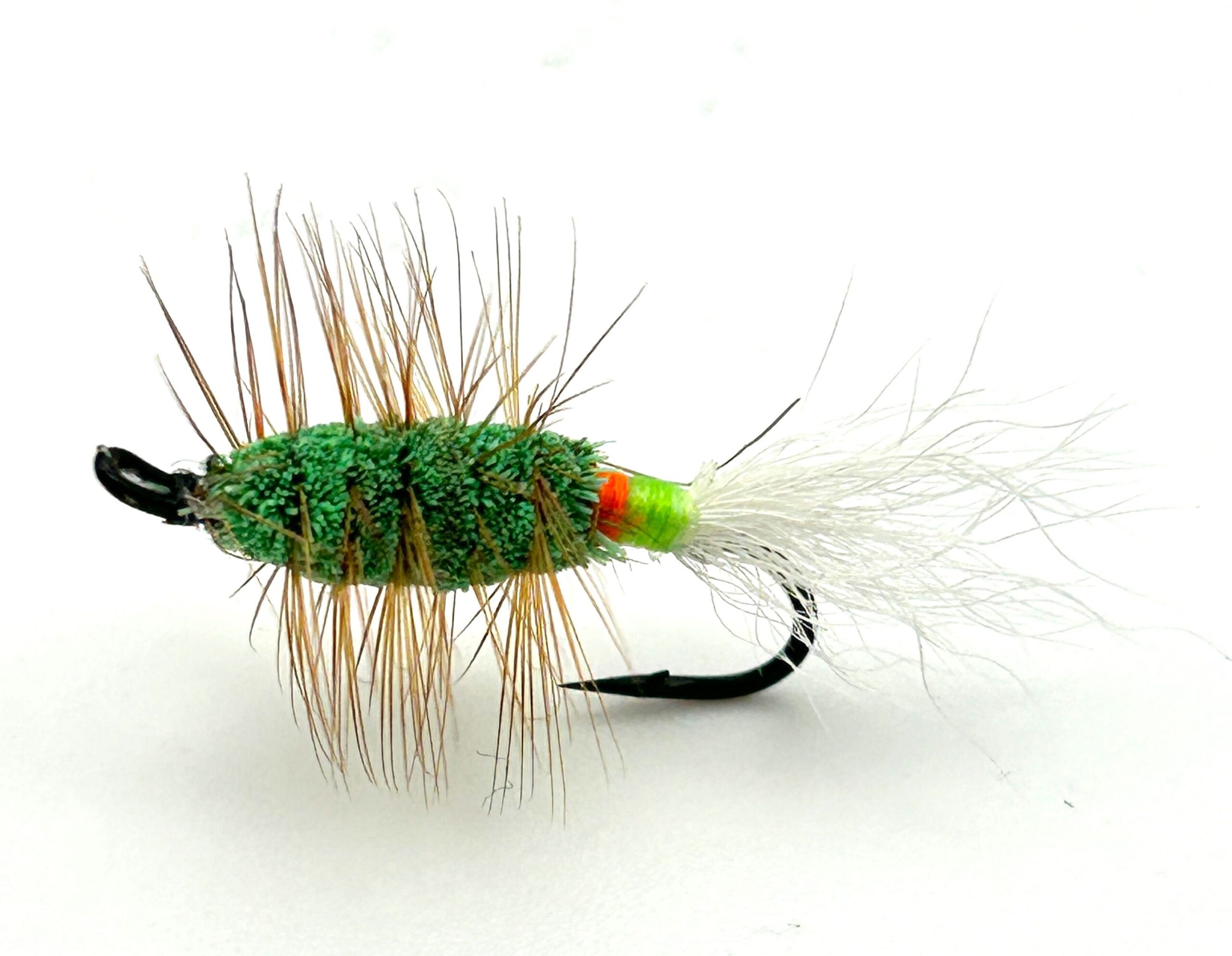
An equally popular version of the Green Machine is the Green Machine White Tail, with a more or less dense tail made from the hair from a white calf’s tail, often accompanied by a fluorescent red and green tag.

Bugs are a type of micro-Bombers
Bugs are, in a sense, micro-Bombers, and I also readily use them as such, greased up fishing them in pockets and seems where the salmon hold out on their way up the river. Some of these spots are often shallow pools where a fly like a regular # 8 – 4 Bomber won’t be in its element. Sometimes, even scaring fish. Here, the tiny bugs come in handy.
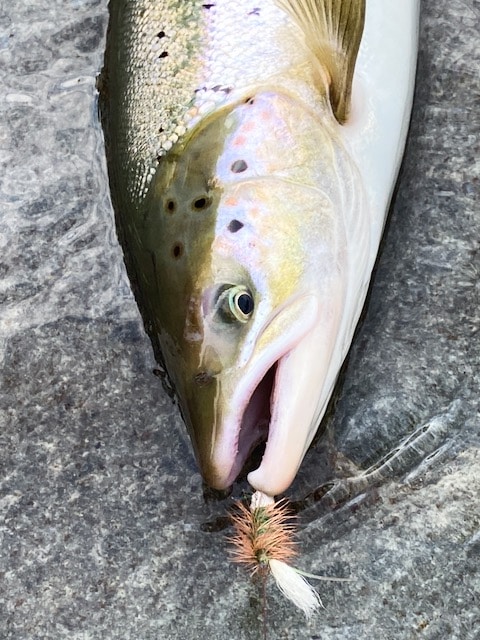
The Bomber may work significantly in fast runs and pools with 1 – 3 meters of water but less so in slow or shallow pools where a greased-up bug may be the perfect choice.
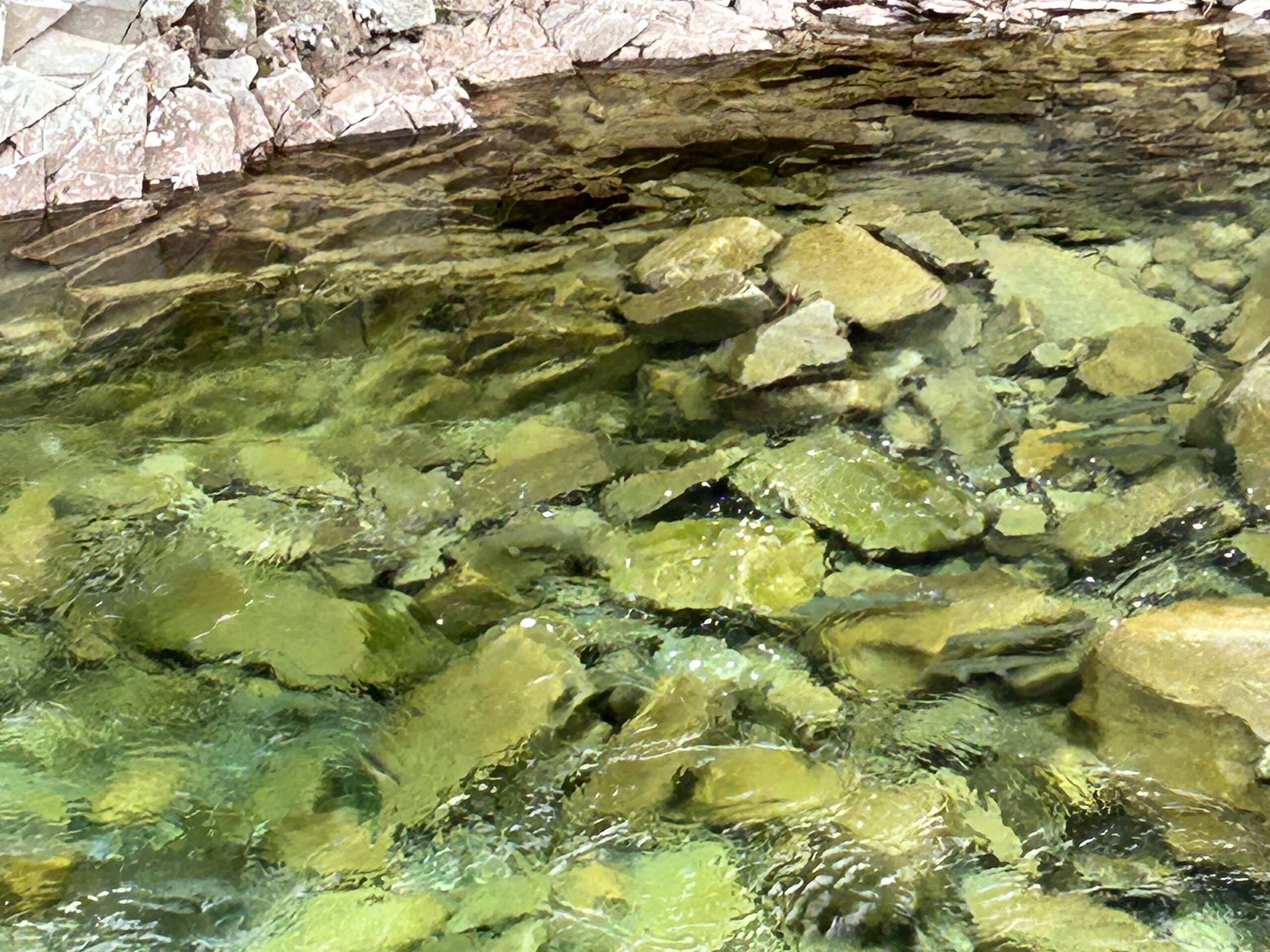
Shallow holding pool. Find Wally! I see at least eight salmon. See if you can spot them.
A bug fished just below the surface in a shallow pool
Salmon staying in shallow pools on their way upstream are easily intimated. It is like the fish are too aware of their exposed position, and a wrongly presented sub-surface fly may send them running. A salmon bug fished just below the surface may be the best solution. Fished drifting towards the fish is a great way to get a hook-up.
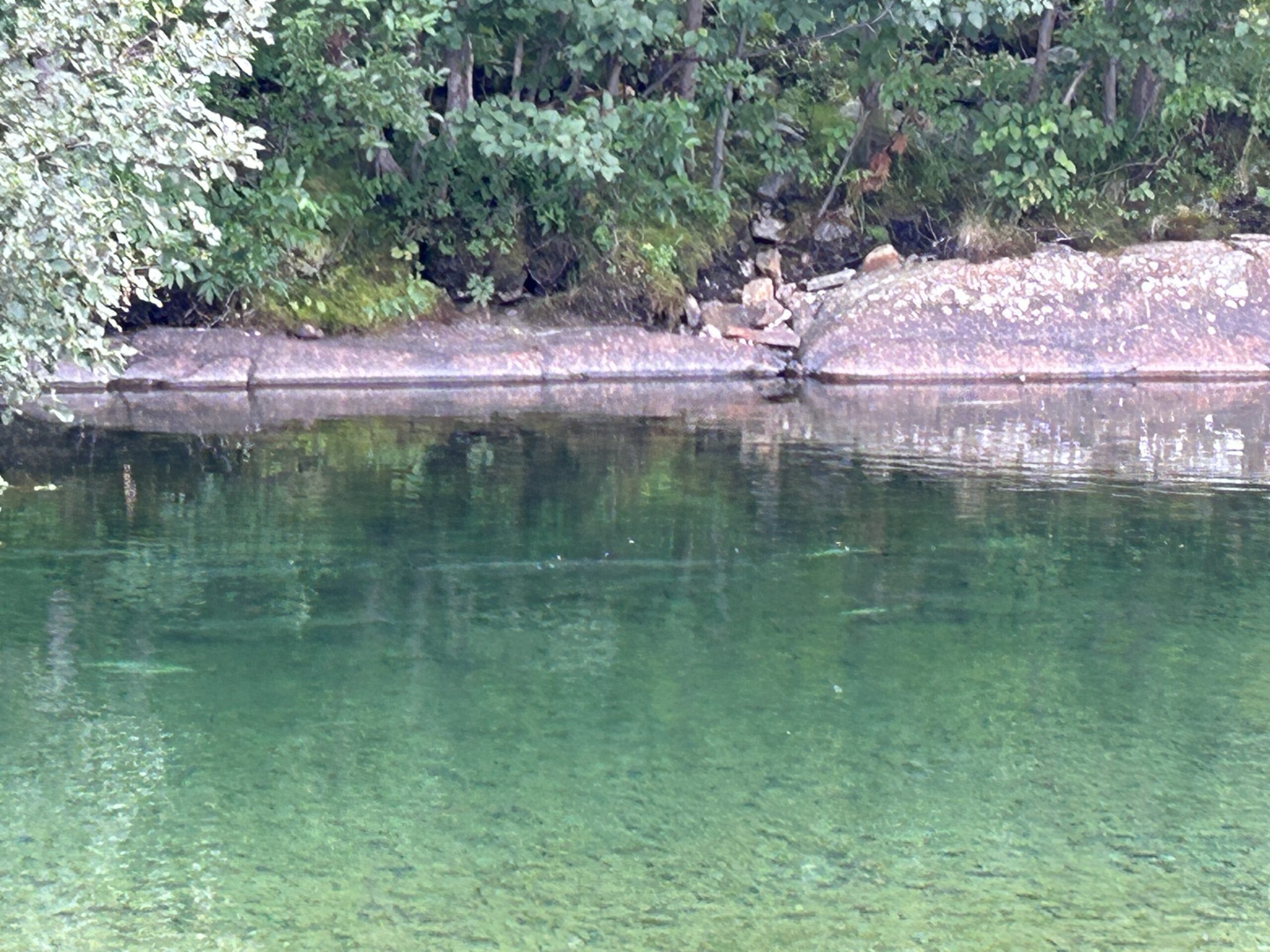
Hiding in slow pools
Salmon hiding out in a slow pool like those fish seen in the image above is not an uncommon site for anglers fishing for Atlantic salmon. They are typically uninterested fish, but if new salmon enter the pool or weather conditions change, some fish may wake up and grab your fly.
Retrieving the fly
A spot like this demands that you put some movement into your fly, and I think bugs are some of the best flies you can use in such a place. Tiny flies with deer hair bodies seem to have the right balance in the water column, allowing you to make a good stop-and-go presentation and letting the bug hang in the water column for a short while in between pulls.

Matching the hatch
You may also use small bug flies exclusively to hook up with salmon that have spend their summer in the river. Salmon that is starting to take colour. Who will jump when new fish enter its pool and occasionally rise to the trail of drifting insects. A salmon that needs you to be on your toes when presenting your fly.
You can often bring such fish to the surface to look at your bug, but sometimes, it needs more than a small floating fly to do the trick; from time to time, you must match the hatch and bring differently coloured bugs and small dry flies to the table. Most likely, it will be a small fly that resembles some of the aquatic life the fish may encounter through the long days of waiting.
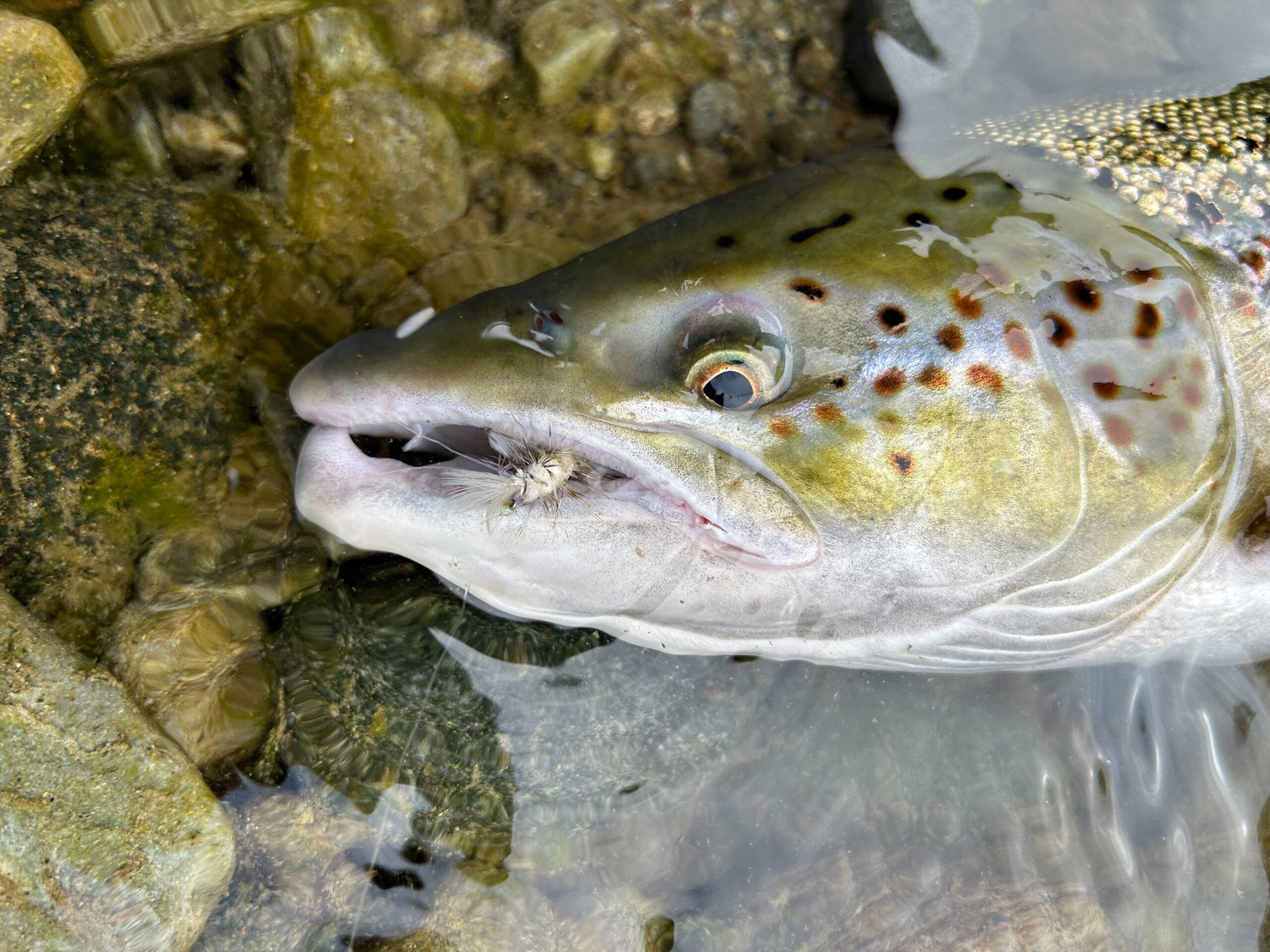
The Crimson But Bug. Yet another variation of the famous Bucks Bug. This pattern is a loved pattern for many anglers in Newfoundland.
A test project. In 2010, we did a short video on a bug project. We were tying a Green Machine bug on a tube.
Fishmadman Newsletter offers: Join our Newsletter and get a total discount.
Our Bug fly tier has created a series of prevalent bugs tied on up-eye salmon hooks, Kamazan and Osprey hooks, in sizes 8 -12, which we will offer at an exclusive Christmas price to our newsletter readers.
25 different bugs + 3 room plastic box + 2 spools of Umpqua Perform X HD

